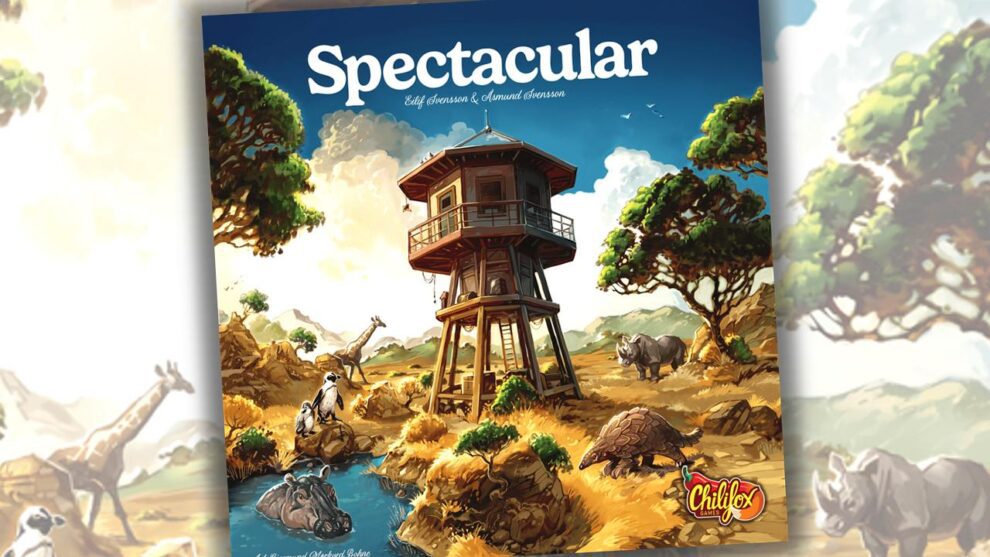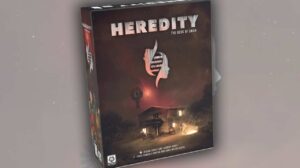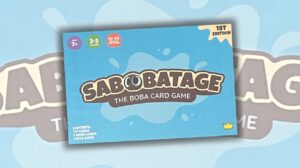Disclosure: Meeple Mountain received a free copy of this product in exchange for an honest, unbiased review. This review is not intended to be an endorsement.
Always Awesome Animals
I was first introduced to Spectacular at PAX U in 2024. The game was neatly laid out upstairs in the “First Look” section. For those not familiar, this area is an open gaming room where you can play the “hottest” games directly from SPIEL Essen and the Tokyo Game Show. The majority of these games aren’t yet in U.S. distribution, so it’s a great chance to preview what’s coming down the line.
As someone who has been aggressively playing Revive on Board Game Arena, I was pleasantly surprised to hear that one of the designers, Åsmund Svensson, had a hand in this lovely zoo-building game. Designed along with his brother Eilif Svensson and illustrated by Gjermund Bohne, Spectacular comes to the U.S. from Chilifox Games via Asmodee.
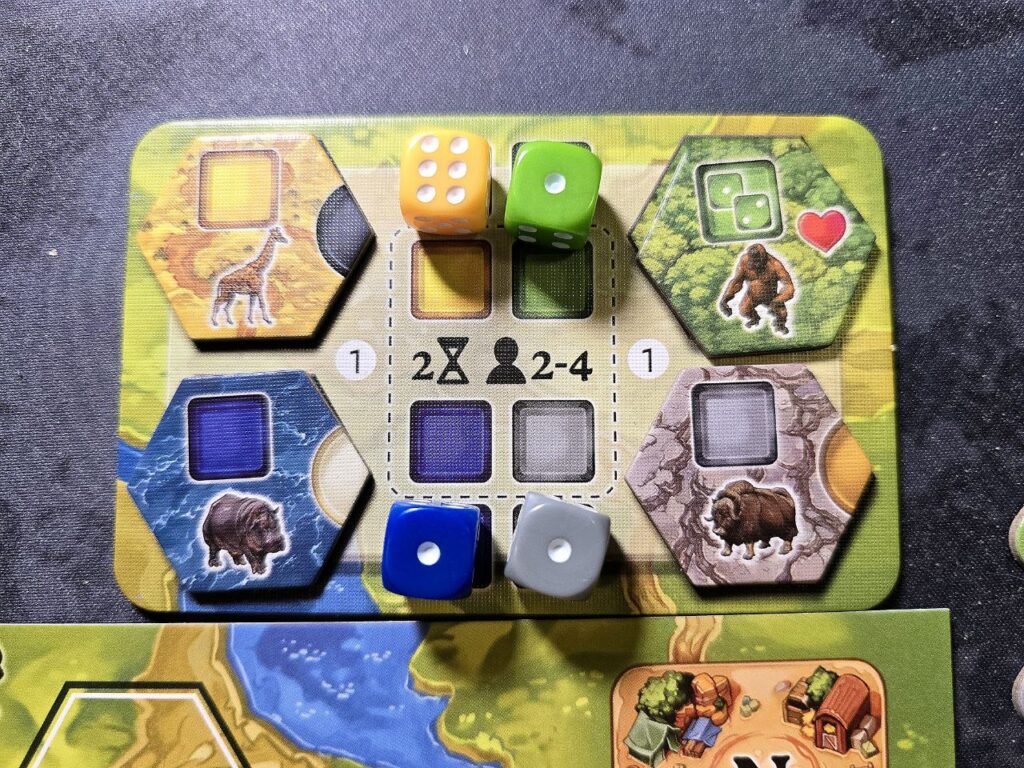
Let’s Build a Zoo
At first glance, the game looks like a mashup of Ark Nova and Castles of Burgundy. Don’t let that fool you—there’s a uniquely different spatial puzzle at hand here.
Players draft tiles and dice from both a rotating and personal supply to build out the most spectacular zoo. On a turn, players draft and then pass their offering board clockwise, keeping a keen eye on what supply is coming next. Players place tiles of the same grouping together, and if the edges of three tiles form a same-colored circle, a watchtower token is placed. Dice are also placed on each tile, which enables that tile to score—and some tiles require specific values.
Scoring happens twice, first at midgame and again at the end. After the first round, players score the die values of the largest cluster of tiles that trace back to the pre-printed entrance of their park. At the end, players score the die values of habitat groupings multiplied by the number of breeding tiles (marked with hearts), placed watchtowers, and the number of different animal types. Scoring can be further enhanced by optionally adding individual objective goals.

Weird Name, But How’s the Game?
Spectacular is a solid game, but by no means stands out among the pack. Even though the gameplay is snappy with simultaneous drafting, it felt a bit clunky, as placing tiles or dice didn’t always feel like it contributed to one’s strategy. I’m not sure how it kept happening, but in multiple plays, we had players end up with an uneven number of pieces. It’s most likely player error, but the gameplay still allowed for those occurrences on multiple occasions.
The core mechanics are strong—you won’t accomplish everything you want because you’re at the mercy of everyone else’s drafts. The game forces you to keep an eye on what’s left in the rotating market, and often, you just don’t get what you need. It almost feels unintentionally cutthroat as you make the tough decision: draft that juicy die now, or wait and hope it’s still there when it comes back around.
Luckily, there are five “workers” you can use to change die faces; outside of those, mitigation is largely absent. Scoring didn’t feel super interesting, as it’s mostly about grouped clusters and piece variety. The challenge of placing dice to enable tile scoring introduces a bit of push-your-luck, but it doesn’t enhance scoring that much.
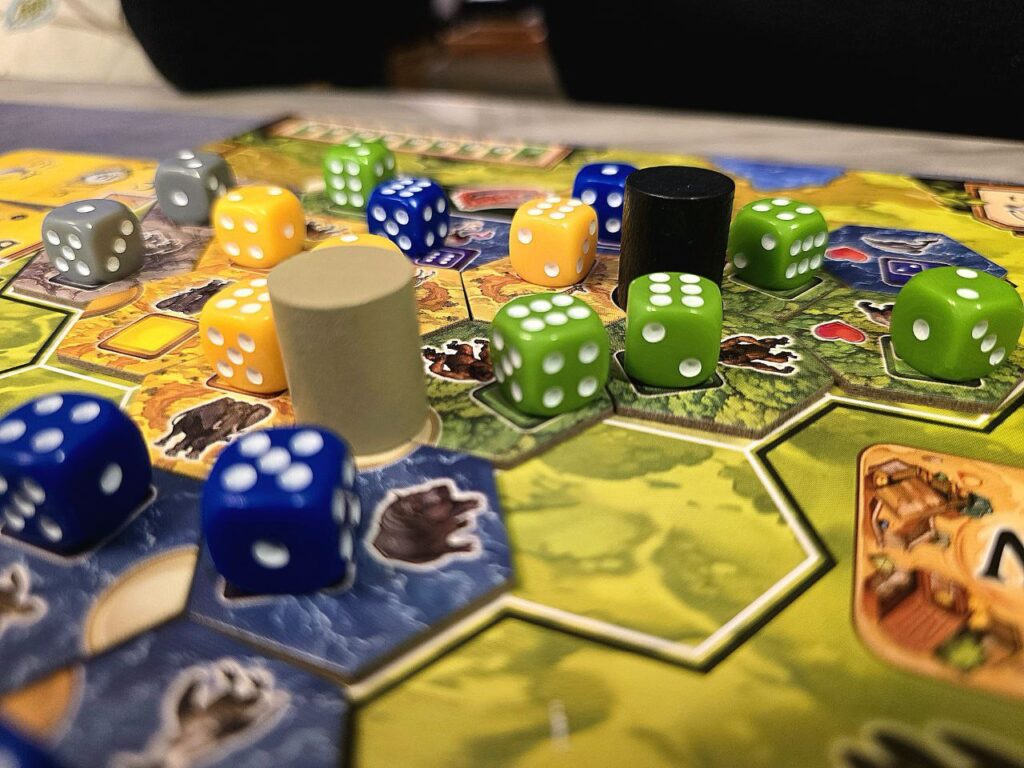
The game leans “cozy,” with virtually no player interaction outside of drafting choices. Since there’s only one “refresh” phase, you’re at the mercy of the tile/dice distribution, which can be off-putting if it doesn’t favor your strategy. That said, it’s still a solid game with a gorgeous production. The aesthetically pleasing tuckboxes and adorable mini dice give it great table presence.
As someone who enjoys spatial puzzles, I had a good time despite the bumpy gameplay and scoring. Gameplay feels like Cascadia while also reminding me of Dorfromantik, Sagrada, and Patchwork. This game will stick nicely with groups who enjoy spatial puzzles or heads-down tile drafting. The snappy turn-taking with little to no downtime—even at the six-player max—makes for a fast, easily digestible experience.
But for me, it doesn’t have the staying power that Cascadia does. Cascadia’s drafting feels more strategic, and each placement is meaningful, with the overall strategy clearly defined. Here, drafting and placing often feels like you’re just making the best of a bad situation, with every available option seeming to clog up your park. To call this Spectacular would be an overstatement, but overall, it’s a pleasant time matching animals and rolling dice.


